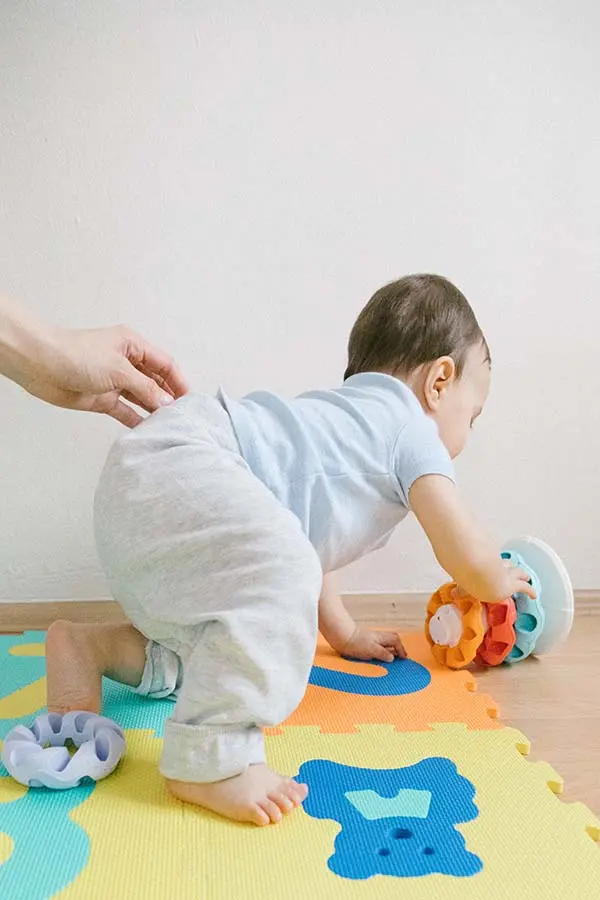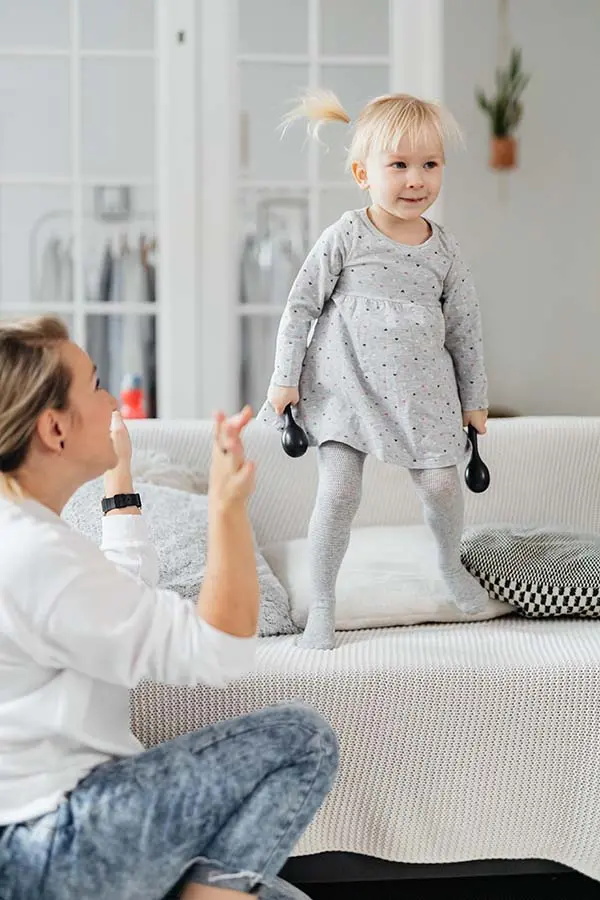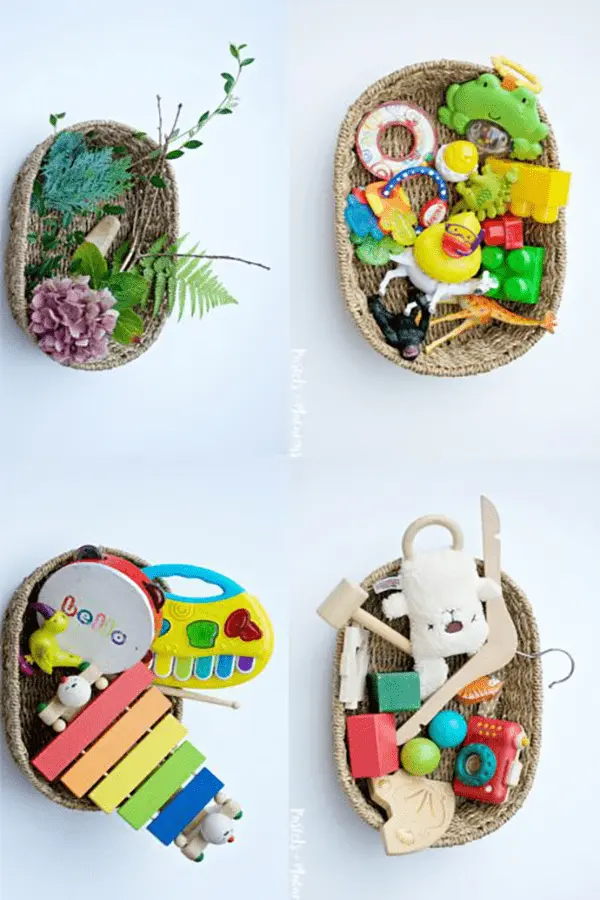settings
children
With Famly since
Physical development in early childhood requires your constant attention. The Department of Health recommends aiming for at least 3 hours of physical activity (across the day) for children in the early years, so that's a lot of activities for physical development to pack in!
But you don’t need to spend time planning loads of extra action games. There are plenty of ways to add physical development skills into daily early childhood activities. From fine motor skills to gross motor skills, here are some ideas on how to do just that.
1. Tummy time

The activity – sensory play for babies who put everything in their mouth by CanDo Kiddo
In a nutshell – Whenever you place a baby on their tummy, surround them with some interesting stuff. Musical instruments, toys, mirrors – anything that will make them want to turn around or flap their arms is great for their physical development and getting babies physically active. These simple sessions strengthen small muscles, especially arm, back, and neck muscles, support early body awareness, and can eventually lead to crawling. Consider putting the small items in bags taped to the floor, to prevent a choking hazard during this sensory play.
What you need:
- Ziploc Bags
- Tape
- Various Items (buttons, beads, shells, pompoms, rice etc.)
2. Baby climbers

The activity – stair climbing tips and tricks by Dinosaur Psychical Therapy
In a nutshell – Time to start encouraging younger children to start walking up and down stairs, and support gross motor development and balance. Start with some large blocks or step stools that children can use to crawl and climb up and over. When they are confident enough to face the full challenge, provide them with some visuals, such as tactile footprints, that will guide them on their physical development journey.
What you need –
- Printable Footprints
- Step Stools or Large Blocks
3. Eurythmics

The activity – 10 best songs for gross motor movement by Let’s Play Music
In a nutshell – Jazz up your next eurythmics (or music and movement) class with these ten lovely songs. Designed to encourage children to use their large motor skills, they’ll inspire your little ones to work on their physical development but also their cognitive abilities, balance and concentration. All sorts of enjoyment and learning combined – gross motor skills development at its finest. Besides, who doesn't love a dance?
What you need –
- Free Printables
- Your Musical Talent or Music Player
4. Treasure baskets

The activity – 12 sensory baskets for babies by Pastels & Macarons
In a nutshell – Planning for physical development doesn't have to be all outdoor physical activities. You can promote fine motor skills with just a box filled with everyday items. Babies can explore, experiment, make choices on their own, and get a chance to practice pincer movements. These types of fine motor activities are so key to supporting babies' fine motor development and are so much fun.
What you need –
- Fruits & Veggies
- Wooden and Plastic Objects
- Soft Toys
- Kitchen Utensils
- Balls
5. Obstacle course

The activity – indoor obstacle course by Kidadl
In a nutshell – A great way to do active play and offer gross motor activities indoors. Obstacle courses are a classic in the early development and can be played indoors too! Construct simple soft bumps around your setting, especially in front of boxes with toys and other resources that your little explorers are keen on visiting. Shift them around from time to time so that reaching the other side stays fun and challenges their physical development, instead of turning into a boring necessity. You can also put tape on the floor, forming different shapes and paths for their feet to follow, so children have to find fun ways around the room.
What you need –
- Pillows
- Chairs
- Pool Noodles
- Blankets
- Beach Balls
6. Finger foods

The activity – 9 finger food ideas by the NHS
In a nutshell – Good news! Eating can be a physical development activity too and helps children develop healthy habits! Get inspired by these 9 ideas for easy but nutritious finger foods and let the little ones feed themselves to promote fine motor skills like grasping and eye-hand coordination. Communal lunch and tea times also support social skills, as children interact with other children over their meal.
What you need –
- Bowls
- Different Kind of Foods
The big ideas
Please note: here at Famly we love sharing creative activities for you to try with the children at your setting, but you know them best. Take the time to consider adaptions you might need to make so these activities are accessible and developmentally appropriate for the children you work with. Just as you ordinarily would, conduct risk assessments for your children and your setting before undertaking new activities, and ensure you and your staff are following your own health and safety guidelines.
Get 1000s of free EY activities
Want over 7,000 activities? See them in a free 14-day trial. Filter to target learning areas, age groups and topics, and get inspired.
Get started









